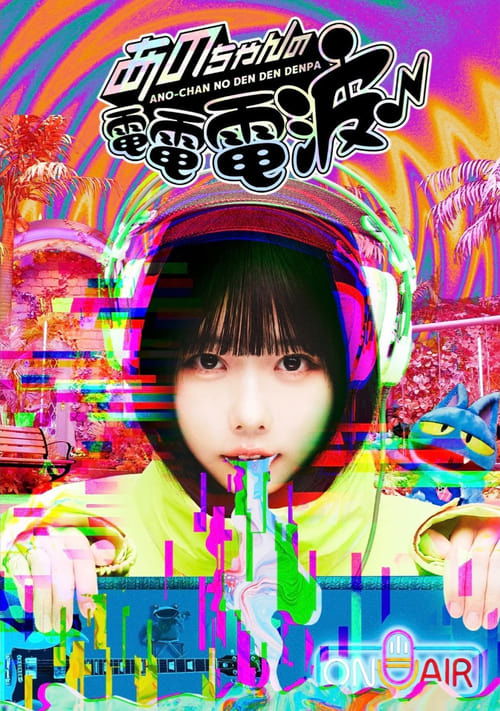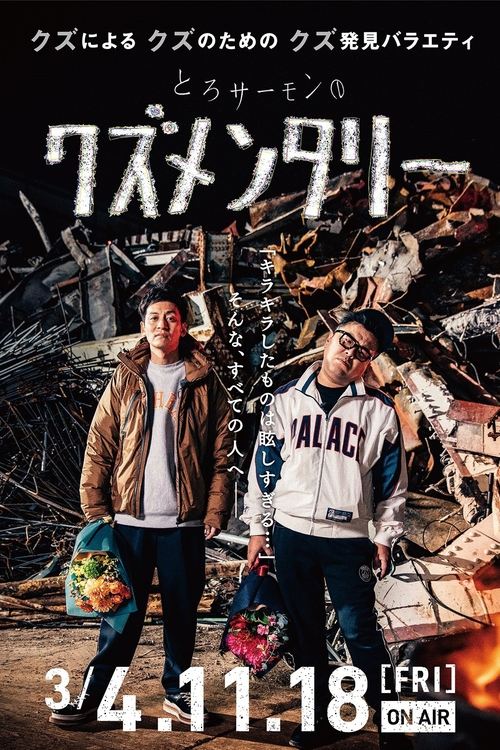
Ask Your Own Question
What is the plot?
In the first episode of "Makubes no 23 ji," we are introduced to the protagonist, a young woman named Aiko, who works as a night shift nurse in a small hospital. The atmosphere is tense as Aiko navigates her responsibilities, often feeling isolated and burdened by the weight of her job. One night, while making her rounds, she encounters a mysterious patient, a man named Haruto, who is in a comatose state. Aiko feels an inexplicable connection to him, which stirs her curiosity and compassion.
As the days pass, Aiko begins to experience strange occurrences in the hospital. She hears whispers and sees fleeting shadows, which heighten her sense of unease. One night, while checking on Haruto, she notices a flicker of movement in his fingers. This moment ignites a spark of hope in Aiko, leading her to believe that he might be aware of his surroundings. Driven by her desire to help, she starts to talk to him, sharing her thoughts and feelings, hoping to reach him.
In the following episodes, Aiko's connection with Haruto deepens. She learns about his past through conversations with his family, who visit the hospital. They reveal that Haruto was a promising artist before his accident, which left him in a coma. Aiko becomes increasingly invested in his recovery, often staying late to talk to him and even bringing him art supplies, hoping to inspire him to wake up. Her emotional state fluctuates between hope and despair as she grapples with the reality of his condition.
As Aiko's bond with Haruto grows, she begins to experience vivid dreams where she interacts with him in a surreal, dreamlike world. In these dreams, Haruto communicates with her, revealing his thoughts and feelings. Aiko becomes determined to help him escape the confines of his comatose state, believing that their connection transcends the physical realm. This leads her to research unconventional methods of therapy, including art therapy and music therapy, which she begins to implement during her shifts.
Midway through the season, a significant twist occurs when Aiko discovers that Haruto's family is planning to pull the plug on his life support due to the lack of progress in his condition. This revelation devastates Aiko, who feels a sense of urgency to save him. She confronts Haruto's family, passionately arguing for more time and alternative treatments. Her emotional plea is met with resistance, but she remains undeterred, vowing to fight for Haruto's life.
In a pivotal episode, Aiko organizes an art exhibition featuring Haruto's previous works, hoping to raise awareness and funds for his treatment. The event draws a crowd, including art enthusiasts and media, which brings attention to Haruto's story. During the exhibition, Aiko shares her journey and the impact Haruto's art has had on her life. The emotional weight of her speech resonates with the audience, leading to a surge of support for Haruto's recovery.
As the season progresses, Aiko's dreams with Haruto become more intense and vivid. In one dream, Haruto reveals a hidden talent for painting, which he had suppressed due to his accident. This revelation inspires Aiko to encourage him to express himself through art, believing it could be the key to his awakening. She begins to create a mural in the hospital, incorporating elements of Haruto's past and their shared experiences, hoping it will reach him on a deeper level.
In the climax of the season, Aiko faces a critical moment when Haruto's family decides to proceed with the life support withdrawal. In a desperate attempt to save him, Aiko rushes to the hospital, where she finds Haruto's room empty, the machines silent. Overcome with grief, she breaks down, but in that moment of despair, she feels a surge of energy and determination. She rushes to the mural she created, pouring her heart into it, believing that her emotions can bridge the gap between their worlds.
In the final moments of the season, as Aiko finishes the mural, a flicker of movement is seen in Haruto's fingers once again. The screen fades to black, leaving viewers with a sense of hope and anticipation for what may come next. Aiko's journey of love, loss, and determination culminates in this moment, setting the stage for potential developments in Haruto's recovery and their connection.
What is the ending?
In the ending of "Makubes no 23 ji," the main characters confront their inner demons and the consequences of their choices. The series culminates in a tense showdown that forces them to face their pasts and the relationships they have built. Ultimately, they find a sense of closure, but not without sacrifice and loss.
As the final episode unfolds, the atmosphere is thick with tension. The sun sets, casting long shadows over the city, symbolizing the weight of the characters' struggles. The protagonist, Haruto, stands at a crossroads, grappling with the decisions that have led him to this moment. His internal conflict is palpable; he feels the burden of his past mistakes and the impact they have had on those around him.
Scene by scene, the narrative progresses:
The first scene opens in a dimly lit warehouse, where Haruto meets with his former ally, Saki. The air is heavy with unspoken words as they discuss the fallout from their previous actions. Saki, visibly shaken, reveals her fears about the future and the choices they must make. Haruto, torn between loyalty and the desire for redemption, struggles to reassure her. Their conversation is filled with tension, underscoring the emotional stakes at play.
In the next scene, we shift to the antagonist, Kaito, who is preparing for a final confrontation. He is surrounded by his loyal followers, who are eager for revenge against Haruto and Saki. Kaito's motivations are clear; he feels betrayed and seeks to reclaim his power. The camera lingers on his face, capturing the intensity of his emotions as he vows to settle the score.
The climax of the episode occurs when Haruto and Saki confront Kaito in a dramatic showdown. The setting is chaotic, with debris scattered around and the sounds of distant sirens echoing in the background. As they face Kaito, the tension escalates. Haruto's determination is evident; he is ready to fight for his beliefs and protect Saki. The confrontation is not just physical but deeply emotional, as each character reveals their vulnerabilities and regrets.
As the fight unfolds, Haruto and Saki work together, showcasing their growth and the strength of their bond. However, the battle takes a tragic turn when Kaito, in a moment of desperation, makes a reckless move that endangers everyone. In a heart-stopping moment, Saki steps in to protect Haruto, resulting in a devastating injury. The scene is heart-wrenching, with Haruto's anguished cries echoing in the warehouse as he cradles Saki, who is fading.
In the aftermath, the warehouse is silent, save for Haruto's sobs. Kaito, realizing the gravity of his actions, is left in shock. The emotional weight of the moment hangs heavy in the air, as Haruto grapples with the loss of Saki and the realization of what their conflict has cost them. Kaito, now stripped of his power and purpose, walks away, haunted by the consequences of his choices.
The final scene shifts to Haruto standing alone at the edge of the city, the sun rising in the distance. He reflects on the journey he has taken, the friendships forged, and the sacrifices made. Though he is filled with grief, there is a sense of hope as he vows to honor Saki's memory by striving for a better future. The series closes with a poignant shot of Haruto, symbolizing resilience and the possibility of redemption.
In summary, the fates of the main characters are intertwined with themes of sacrifice, redemption, and the consequences of their actions. Haruto is left to carry the weight of his choices, while Kaito is left to confront the emptiness of his revenge. Saki's sacrifice serves as a catalyst for Haruto's growth, marking a bittersweet end to their tumultuous journey.
Is there a post-credit scene?
In "Makubes no 23 ji," Season 1, there is indeed a post-credit scene that adds an intriguing layer to the narrative.
As the credits roll, the screen fades to black before transitioning to a dimly lit room filled with various monitors displaying different locations around the city. The camera pans slowly, revealing a figure shrouded in shadows, their face obscured. The atmosphere is tense, underscored by a low, pulsating soundtrack that heightens the sense of mystery.
The figure leans forward, and a glint of light catches a metallic object in their hand--a small, intricately designed device that resembles a remote control. With a flick of their thumb, the screens flicker to life, showing scenes from earlier episodes, highlighting key moments and characters. The figure's voice, distorted and echoing, breaks the silence, saying, "The game is just beginning."
As the camera zooms in on the device, it reveals a series of buttons labeled with cryptic symbols, hinting at future events and challenges that the main characters will face. The scene ends with a close-up of the figure's eyes, filled with a mix of determination and malice, before cutting to black once more.
This post-credit scene leaves viewers with a sense of foreboding and anticipation, suggesting that the stakes will be raised in the upcoming season, and that unseen forces are at play, manipulating events from behind the scenes.
What is the significance of the character Kenta's relationship with his sister in the story?
Kenta's relationship with his sister is central to the emotional core of the narrative. Their bond is tested as Kenta grapples with the pressures of his responsibilities and the secrets he keeps from her. The scenes depicting their interactions are filled with tension and warmth, showcasing Kenta's protective instincts and his sister's longing for independence. This dynamic drives Kenta's internal conflict, as he struggles to balance his familial duties with his personal aspirations.
How does the character of Yumi influence Kenta's decisions throughout the season?
Yumi serves as a catalyst for Kenta's growth, challenging him to confront his fears and insecurities. Her unwavering support and belief in his potential push him to take risks he would otherwise avoid. In pivotal moments, such as when she encourages him to pursue his dreams despite the odds, Kenta's emotional state shifts from doubt to determination. Their interactions are charged with unspoken feelings, adding layers to Kenta's motivations as he navigates his journey.
What role does the mysterious artifact play in the unfolding events of the season?
The mysterious artifact is a key plot device that drives the narrative forward. It is introduced in the first episode, shrouded in intrigue and danger. As characters seek to understand its origins and powers, the artifact becomes a symbol of ambition and greed, leading to conflicts among various factions. The emotional stakes rise as Kenta and his friends become entangled in the artifact's mysteries, forcing them to confront their own desires and the consequences of their actions.
How does the rivalry between Kenta and his childhood friend Takashi evolve throughout the season?
The rivalry between Kenta and Takashi is marked by a blend of camaraderie and competition. Initially, their relationship is characterized by playful banter, but as the stakes rise, jealousy and misunderstandings create a rift between them. Key scenes highlight their contrasting motivations: Kenta's desire for acceptance versus Takashi's ambition to prove himself. This rivalry culminates in a dramatic confrontation that forces both characters to reevaluate their friendship and what it means to support one another.
What are the implications of the secret that Kenta uncovers about his family's past?
The secret about Kenta's family's past serves as a turning point in the narrative, revealing hidden truths that reshape his understanding of himself and his place in the world. As Kenta uncovers this information, he experiences a tumultuous mix of anger, betrayal, and a sense of duty. The emotional weight of this revelation is palpable, leading to intense scenes where Kenta grapples with his identity and the legacy he wishes to uphold. This discovery not only impacts his personal journey but also influences his relationships with other characters.
Is this family friendly?
"Makubes no 23 ji" is a series that, while primarily aimed at a general audience, contains some elements that may not be suitable for younger viewers or sensitive individuals. Here are some potentially objectionable or upsetting aspects:
-
Emotional Turmoil: The characters often experience intense emotional struggles, including themes of loss, betrayal, and existential crises, which may be distressing for younger audiences.
-
Conflict and Tension: There are scenes of interpersonal conflict that can escalate into heated arguments or confrontations, showcasing the darker sides of human relationships.
-
Mature Themes: The show explores complex themes such as identity, societal pressure, and the consequences of choices, which may be difficult for children to fully understand.
-
Visual Imagery: Some scenes may include unsettling imagery or situations that evoke a sense of discomfort or anxiety, particularly in moments of high tension.
-
Mild Language: There are instances of mild profanity or harsh language that may not be appropriate for younger viewers.
-
Parental Guidance: The show may require parental guidance for younger viewers due to its exploration of mature themes and emotional depth.
Overall, while "Makubes no 23 ji" offers rich storytelling and character development, it is advisable for parents to consider these elements when determining its suitability for children or sensitive viewers.























